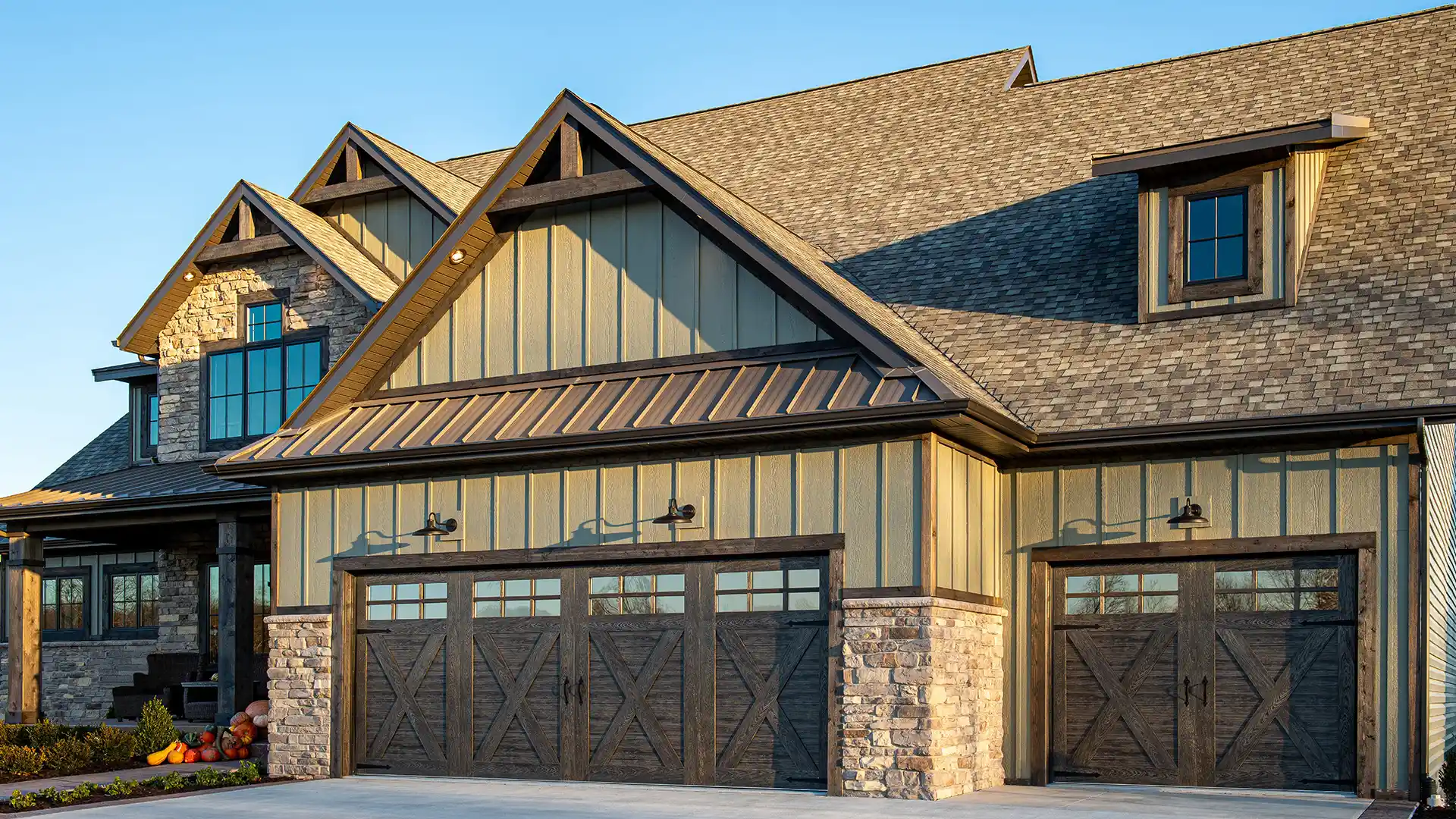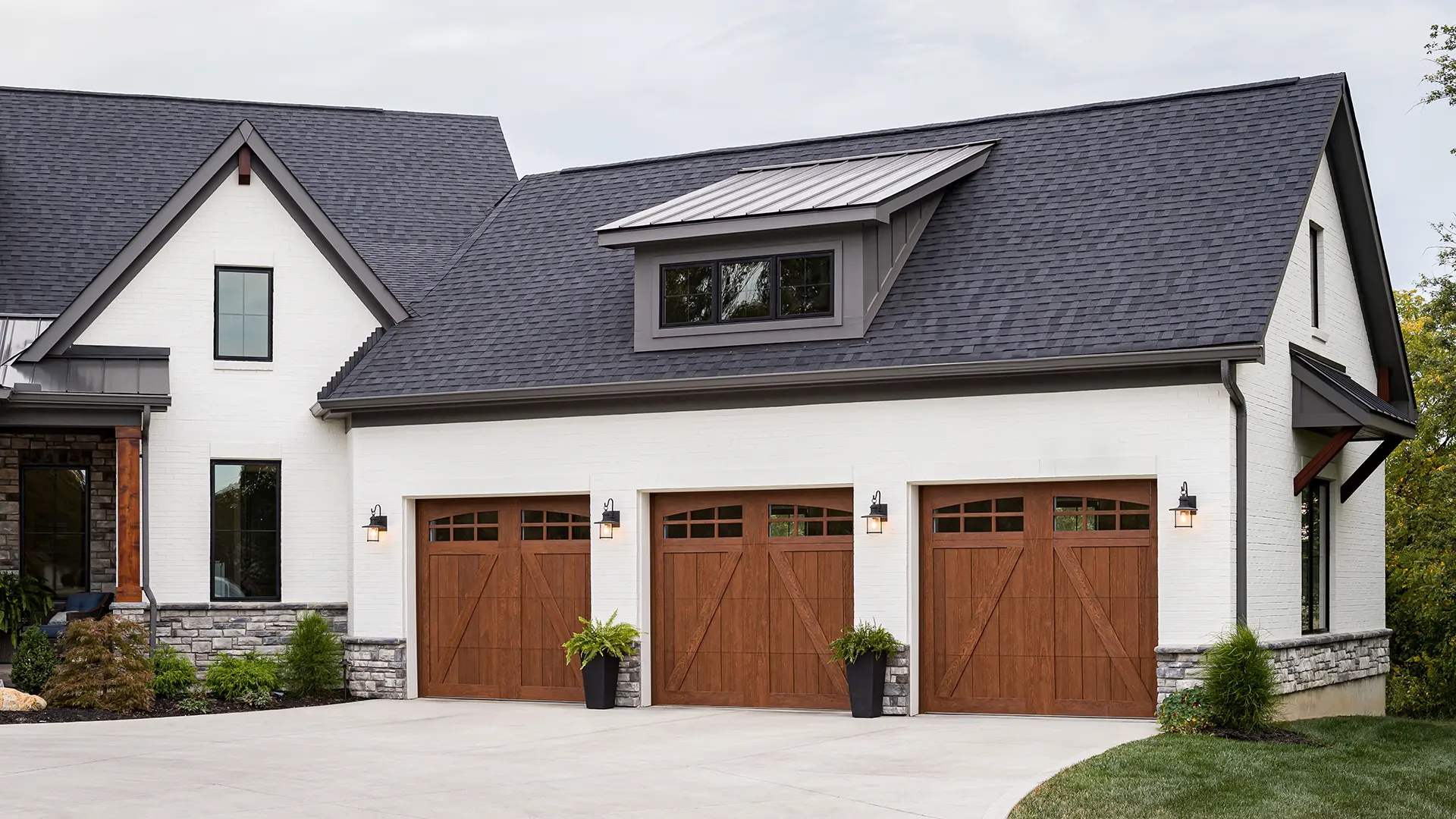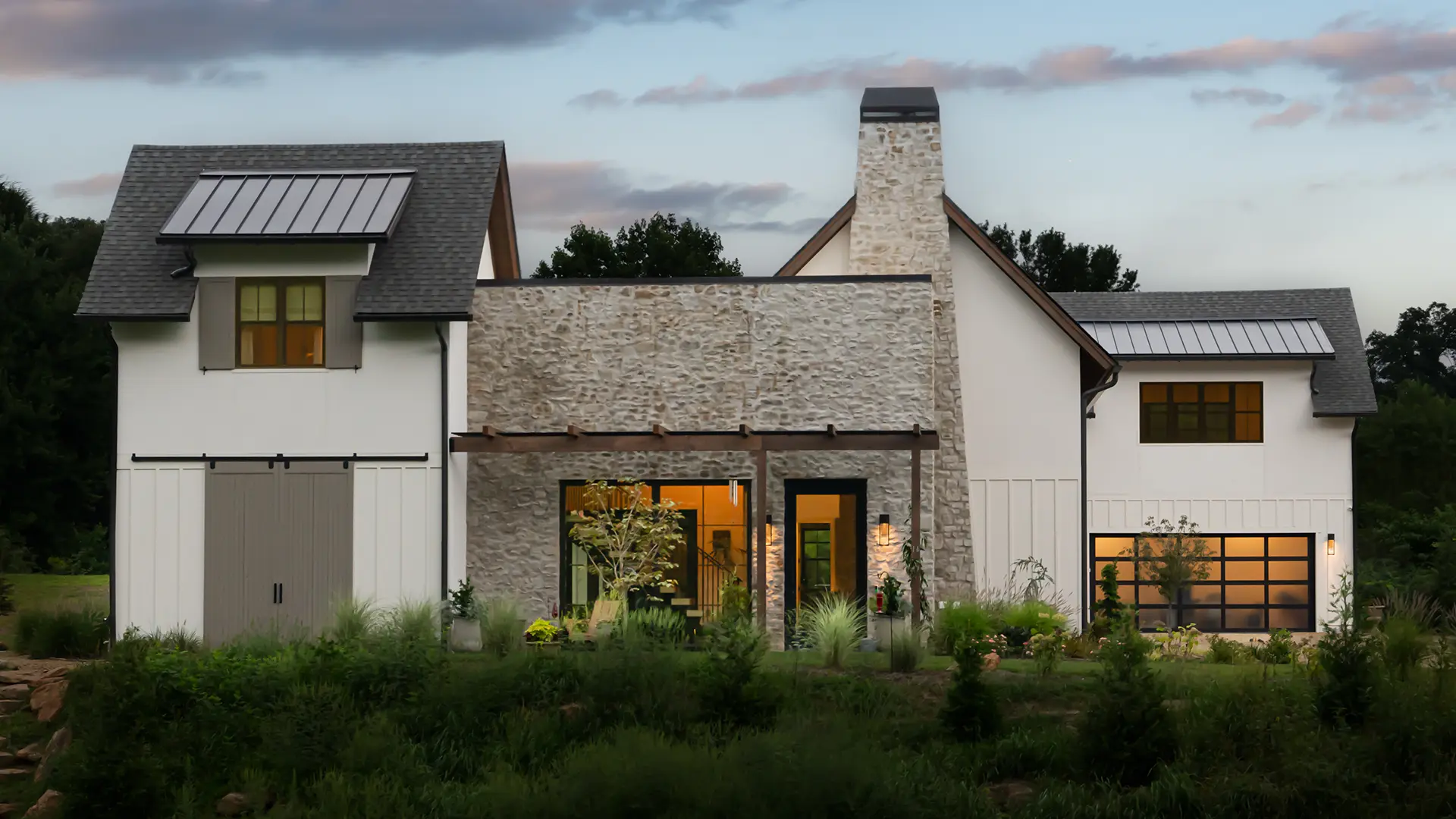For better or worse, your garage door is out there for all to see. It plays a starring role in curb appeal while safeguarding your vehicles and belongings. But there's an ever-present threat that can turn your door into a faded, warped shadow of its former self: the sun.
Day after day, relentless UV rays bombard your garage door, causing colors to fade, materials to deteriorate, and potentially compromising its structural integrity. The good news? With the right preventive measures, you can shield your garage door from sun damage and keep it looking fresh for years to come.
Understanding Sun Damage
When sunlight hits your garage door, it's not just bringing warmth and light – it's delivering a constant stream of ultraviolet radiation that can wreak havoc on your door's materials. UV rays are particularly sneaky because their damage builds up gradually, often going unnoticed until significant deterioration has occurred.
For wooden garage doors, prolonged sun exposure can lead to dried-out fibers, splitting, and severe cracking. Metal doors aren't immune either – their color can fade and eventually warp, especially in areas where protective coatings have broken down. If your door has windows, the weatherstripping and seals around them are vulnerable, becoming brittle and losing their effectiveness over time.
Left unchecked, sun damage creates a domino effect. What starts as simple fading can progress to material breakdown, reduced insulation efficiency, and even operational issues as components become misaligned due to warping. These problems can affect your home's appearance and compromise your garage door's basic functionality.
Materials Most Likely to be Affected by Sun Damage
Different garage door materials react differently to sun exposure, and understanding these vulnerabilities is important to protect your investment.
Wood doors, while naturally beautiful, are particularly susceptible to the sun's harsh effects. UV rays break down lignin, the natural compound that holds wood fibers together, leading to surface graying and deep structural cracks. When summer heat combines with humidity, moisture seeps into these cracks, creating a perfect environment for warping and rot. Even treated wood isn't completely immune – it just buys you more time before protection needs renewal.
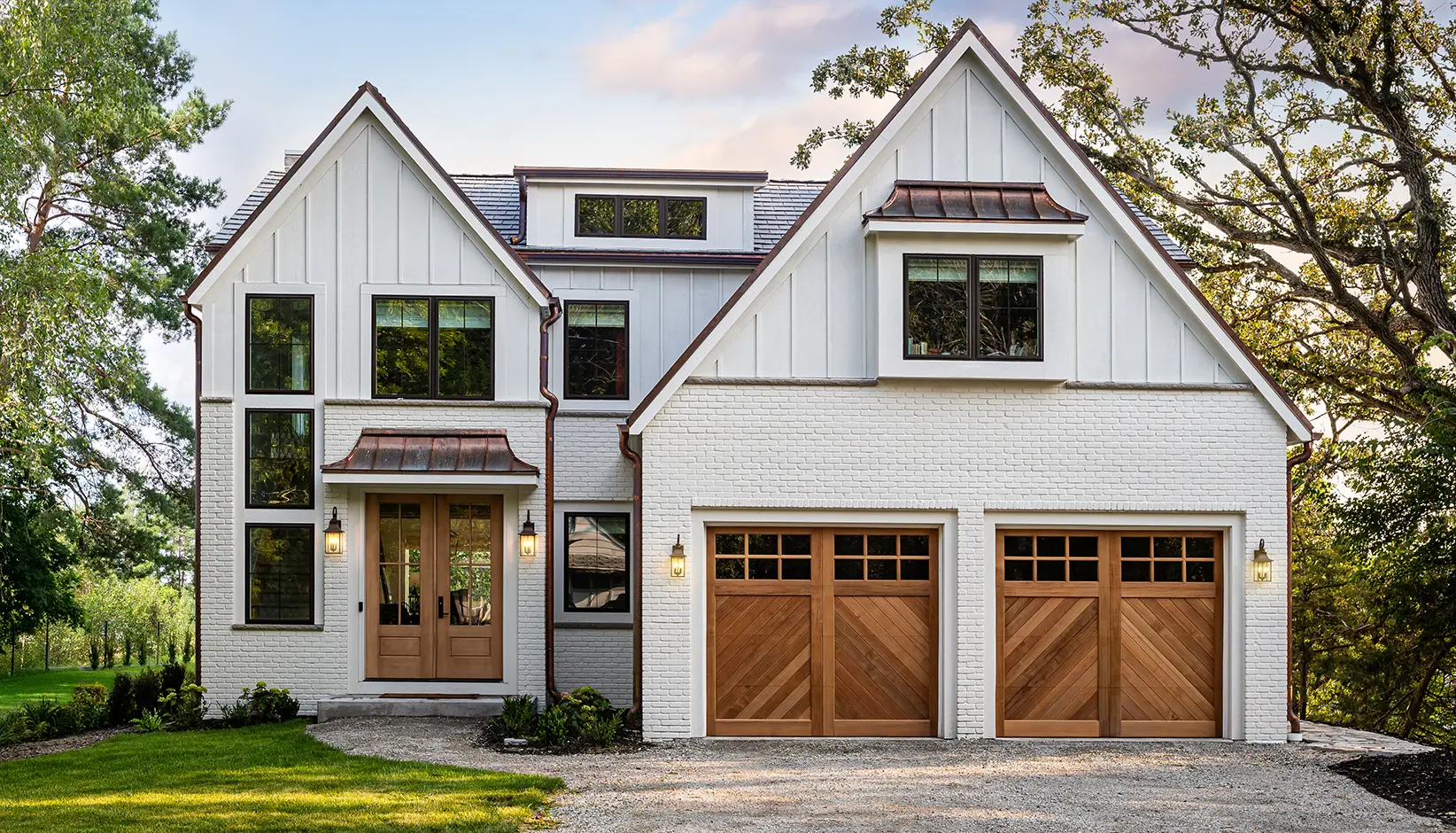
Reserve® Wood Custom garage door
Vinyl doors face their own battles with the sun. Despite being engineered for outdoor use, intense UV exposure can make vinyl brittle over time. Think of it like a plastic chair left outside for years – it eventually becomes fragile and prone to cracking. The material can also suffer from dramatic color fading, turning your pristine white door into an uneven, yellowed surface that ages your home's appearance.
Fiberglass doors, while generally durable, aren't invincible against UV radiation. Extended sun exposure can cause the material to yellow and become chalky. The gel coat that gives fiberglass its smooth finish gradually breaks down, leading to a rough texture that's more susceptible to collecting dirt and showing wear.
Metal doors, particularly steel and aluminum, primarily struggle with paint degradation under intense sunlight. UV rays break down the paint's chemical bonds, causing fading and chalking. In severe cases, the protective coating can deteriorate so much that the metal becomes exposed to moisture, potentially leading to rust spots – especially in areas where the door might get scratched or dented.
Steps to Prevent Sun Damage to Your Garage Door
Preventing sun damage to your garage door starts with smart material choices. Opt for UV-resistant materials, such as steel with baked-on enamel finishes or composite wood designed to withstand harsh sun exposure. These materials are engineered to resist fading and structural damage.
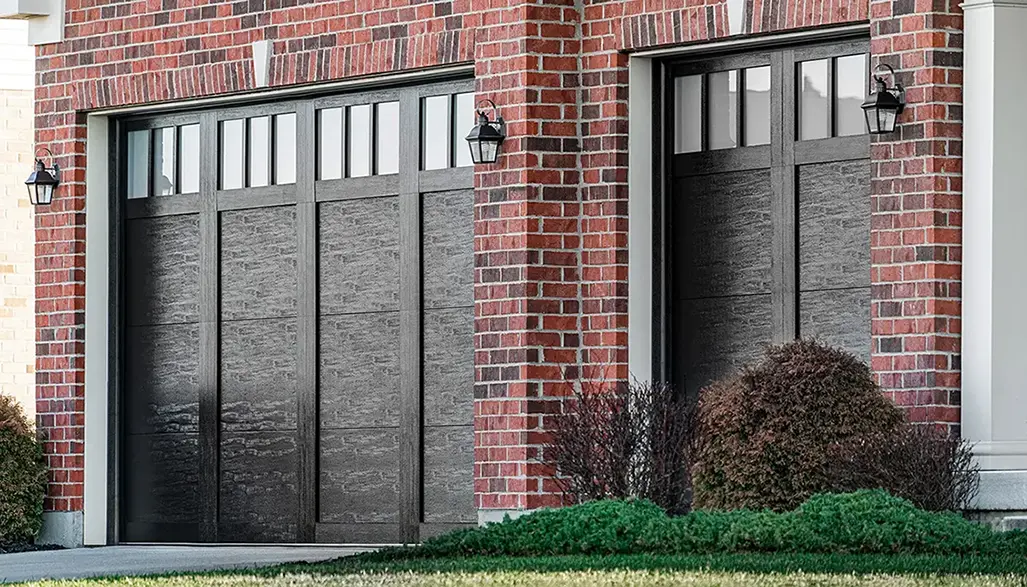
Canyon Ridge® Elements faux wood garage door
Regular maintenance is your next line of defense. A simple schedule of cleaning and inspecting your garage door can make a world of difference. For wood doors, this means gently washing the surface to remove dirt and pollutants, followed by reapplying a quality stain or finish every couple of years to protect against UV rays and moisture. Regular inspections help catch early signs of wear, allowing you to intervene before minor issues become major headaches.
Protective coatings are helpful for increasing your door's resilience. UV-blocking paints and sealants for wood and metal doors create a barrier between the sun and the surface of your door. These coatings not only preserve color but also add an extra layer of protection against the elements, effectively extending the life of your garage door.
Consider installing shade structures like awnings or pergolas to shield your garage door from direct sunlight. These structures can reduce exposure significantly, blocking the constant UV rays that lead to fading and damage.
Positioning plants strategically can also provide natural shade. Planting trees or shrubs near your garage can create a buffer against the sun's rays, keeping your door cooler and less prone to damage. Just ensure that plants are placed at a safe distance to avoid root or moisture-related issues.
But when it comes down to it, nothing beats a regular inspection. Keep an eye out for early signs of sun damage, such as discoloration or minor cracks, and address them promptly. By staying proactive, you can maintain your garage door's appearance and functionality for years to come.
Like anything else in your home, you want to protect your investment and preserve your garage door as best as possible. By implementing these preventive strategies today, you'll avoid costly repairs tomorrow. Need expert guidance on protecting your garage door? Our team of specialists is ready to help you create a customized protection plan. Contact a Clopay dealer near you to learn more.
Frequently Asked Questions
Q: How long does it take for sun damage to become visible on a garage door?
A: Sun damage can begin showing within 1-2 years, with noticeable fading appearing first. However, the rate varies depending on your climate, door material, and sun exposure.
Q: Can I reverse sun damage once it appears?
A: While existing damage can't be completely reversed, you can improve appearance through refinishing or repainting. The key is preventing further damage with proper protection.
Q: How often should I reapply protective coatings?
A: Most protective coatings should be reapplied every 2-3 years, though wooden doors may need annual treatment in harsh climates. Check manufacturer recommendations for your specific door type.
Q: Will my garage door warranty cover sun damage?
A: Most standard warranties don't cover natural weathering or sun damage. This is why preventive maintenance is so important for protecting your investment.
Helpful Articles
Guide to Garage Door Materials

